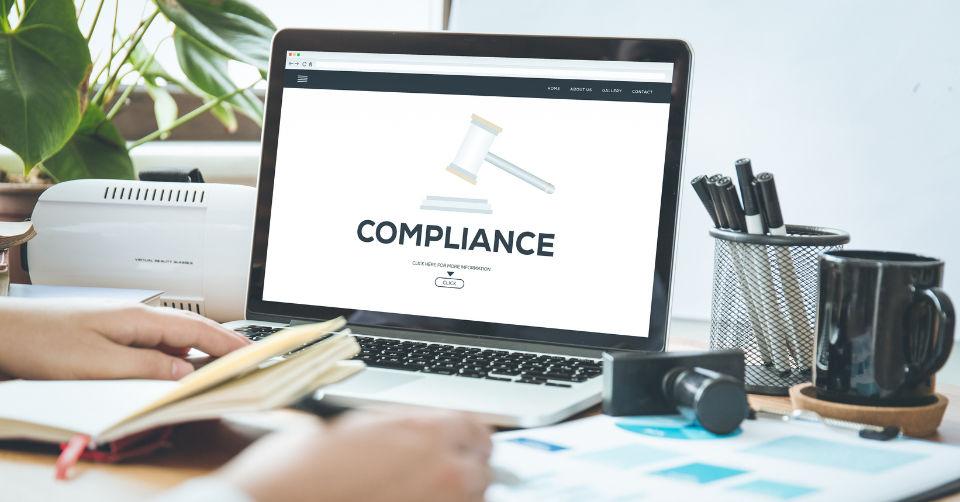Improve workplace compliance training with immersive simulations

A look at how to improve workplace compliance training by leveraging the behavior change, scalability and measurement capabilities of immersive simulations.
From avoiding phishing attacks to building business ethics, numerous compliance topics are front and center for today’s companies. Organizations need their team to understand their company policies, procedures and guidelines. But more importantly, they need employees to act on them.
With some form of hybrid working now the norm for many companies, virtual compliance training must evolve to be more than a one-off onboarding requirement for remote employees.
Instead of a one-size-fits-all approach, personalized training via immersive simulation helps ensure workplace compliance initiatives resonate with remote employees, as it increases emotional engagement while focusing on positive behavior change and actions. This allows a business to cover hot-button topics promptly when needed, reinforce code of conduct policies with multiple touchpoints, and help supervisors successfully manage remote employees by measuring an individual’s progress over time.
Here are some specific examples of how immersive simulation technology helps support the rollout of compliance training to dispersed teams.
Cover hot-button topics promptly
Immersive training simulations can be rolled out to a global workforce just like any standard learning program. However, the difference is in the engagement of learners. Simulations present modern scenarios more realistically than traditional compliance training methods, which drives actual behavioral change in employees. This allows businesses to address hot-button issues promptly.
One massive consulting firm faced this exact scenario recently when they realized new employees could feel pressured into releasing confidential customer information. The metrics on their existing training program showed these employees knew what the compliance policy was, and they passed traditional compliance assessments with flying colors.
But once the firm dove in a bit deeper by implementing an immersive training simulation, they were able to analyze exactly when the breakdown was occurring. The results were staggering: 35% of learners were appeasing clients when pressured to give up confidential details. The simulation—because it replicates real-world situations precisely—was able to determine that employees folded when clients repeatedly asked for information, instead of following company guidelines.
The simulation results made it easy to identify which employees were struggling and corrected the behavior by following up with additional sessions to teach them how to push back against policy-bending client requests gracefully. Soon thereafter, the risky behavior was resolved, which eliminated the possibility of a lawsuit likely to cost tens of millions of dollars.
The difference was clear, as employees now not only knew the policy, but had practiced how to execute it in the moment, no matter their work location.
Reinforce code of conduct policies
For many businesses, the code of conduct is something remote employees read one time during onboarding, then never again. But that isn’t good enough when it comes to workplace compliance initiatives requiring ongoing work.
As an example, businesses around the world encourage employees to call out unethical, incorrect or ineffective business processes when noticed. But in reality, many employees are unsure when and how to speak up to call out these bad business practices, especially in situations involving a superior from a different department.
While there is no definitive strategy that works for everyone every time, businesses must continue to regularly reinforce messaging that pushes employees forward. This can be an uncomfortable process for some, but it is a necessary part of growth. Striving to tackle the highest-priority problems creates a challenge for the business: how does one determine exactly where additional efforts are needed?
The answer: measure it!
Immersive learning simulations allow L&D departments to do exactly that. Let’s use the example above about employees who are unsure when to speak up and call out bad business practices.
In a compliance and risk management simulation, employee learners can work through a business ethics scenario where they hear the packaging department has no issue with errors being printed on product labels. Even after the employee “calls out” the issue in the simulation, management in the packaging department overrides their concerns and decides to move forwards anyways, leaving the employee asking the question, “Now what?”
The learner is then faced with multiple options on how to proceed. Options include taking the concern to HR, filing it with a separate oversight committee, and other selections. The data from employee decision-making at this phase is then aggregated, creating a final readout for company leadership to assess how well employees follow workplace compliance policies in correcting this internal issue.
Because it is such a difficult decision in the moment, many employees will get the response wrong. But no matter - because it was in a safe, protected virtual environment, there are no negative consequences to the business and the employee will learn the correct response promptly.
Management will see which employees are struggling and be able to assess if this is a larger company-wide issue in need of additional compliance training. If it is an issue with only a few select individuals, those people can be targeted automatically with additional brief virtual simulation learning opportunities on the same subject in the near future.
This automated, yet personalized reinforcement makes it easy for problems with individuals to be corrected with little action needed from management. In cases where a larger issue may be present, leadership will have the data needed to make an informed decision about how best to proceed.
In this way, businesses who use immersive training simulations can better ensure resources are being put towards the most optimal initiatives, and stakeholders can rest assured that any internal issues are being resolved proactively.
Manage employees better by measuring progress
One of the biggest benefits of a modern immersive learning solution is the ability to measure precisely where employees are struggling and monitor their improvement over time.
Training sessions are typically short (between 10-15 minutes) but can be pushed out to remote employees every few weeks to see if they learned from past mistakes. Proof of their improvement is right there in the data. This consistency allows a business to see if certain locations are performing better than others and scale programs working especially well.
A multinational pharmaceutical company found massive benefits this way. They identified a learning program in its early stages with high learner satisfaction scores and no geographic bias, meaning employees in different locations all reported the same learning module was especially effective.
Within about a month, the pharmaceutical company had the learning module translated into 22 different languages and made it a priority for employees across the globe. Because the immersive training simulation translation updates were done automatically, it was 80% less expensive to roll out translated versions to different global locations while reimagining compliance training. That’s a win-win for the business.
Progress can happen fast when data on employee understanding and improvement is readily available. Management can see exactly what is engaging and what isn’t and make adjustments quickly to ensure compliance. And with a scalable learning tool, and even faster translation technology on the horizon, the speed of positive change for workplace compliance training is only accelerating.
Positive behavior change is the goal
Immersive training simulations measure positive behavior change, shifting the focus away from the specific language of laws and internal policies that traditional training leans on so heavily. Employees are tested on what they actually would do, instead of how well they can read. That’s the underlying goal of workplace compliance initiatives after all: to shift employee behavior for the better.
With the rise of remote work, it’s even more difficult to physically see and review how employees react to tough situations. But with simulations, businesses can easily assess how employees around the world would react to any scenario and start the hard work needed to get positive results. Thus, the new era of engaging training is here, and it looks like a simulation.
Interested in sampling a simulation? Try ETU’s 10-minute ethics & compliance simulation.
 Dr. Conor Gaffney, Chief Product Officer
Dr. Conor Gaffney, Chief Product Officer
Conor leads the product team working with customers and the internal engineering team to map the product and solution roadmaps for the business. Conor believes that with the right tools and processes, realistic and immersive simulations can be quickly and easily developed by businesses to deliver innovative solutions.

